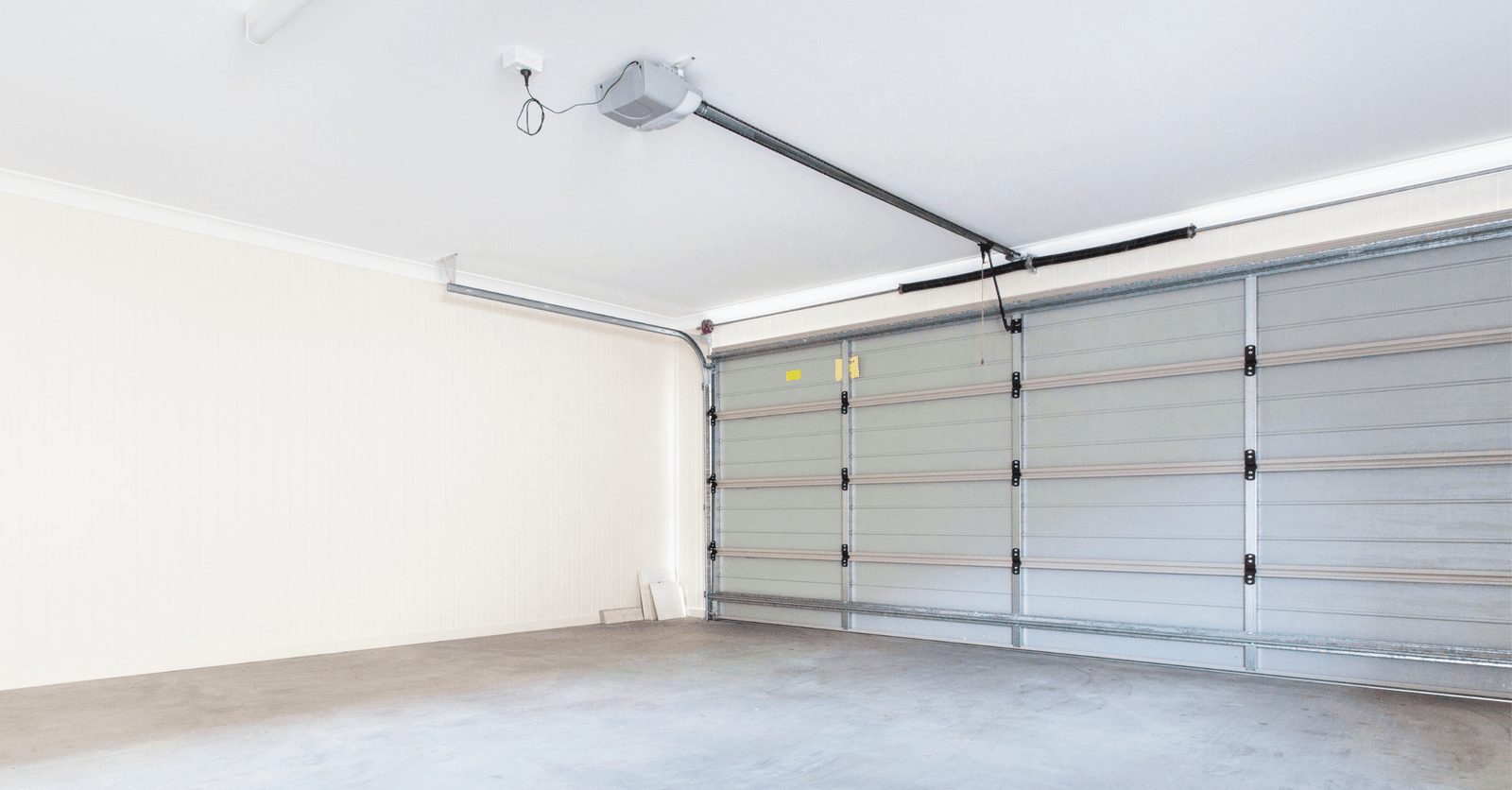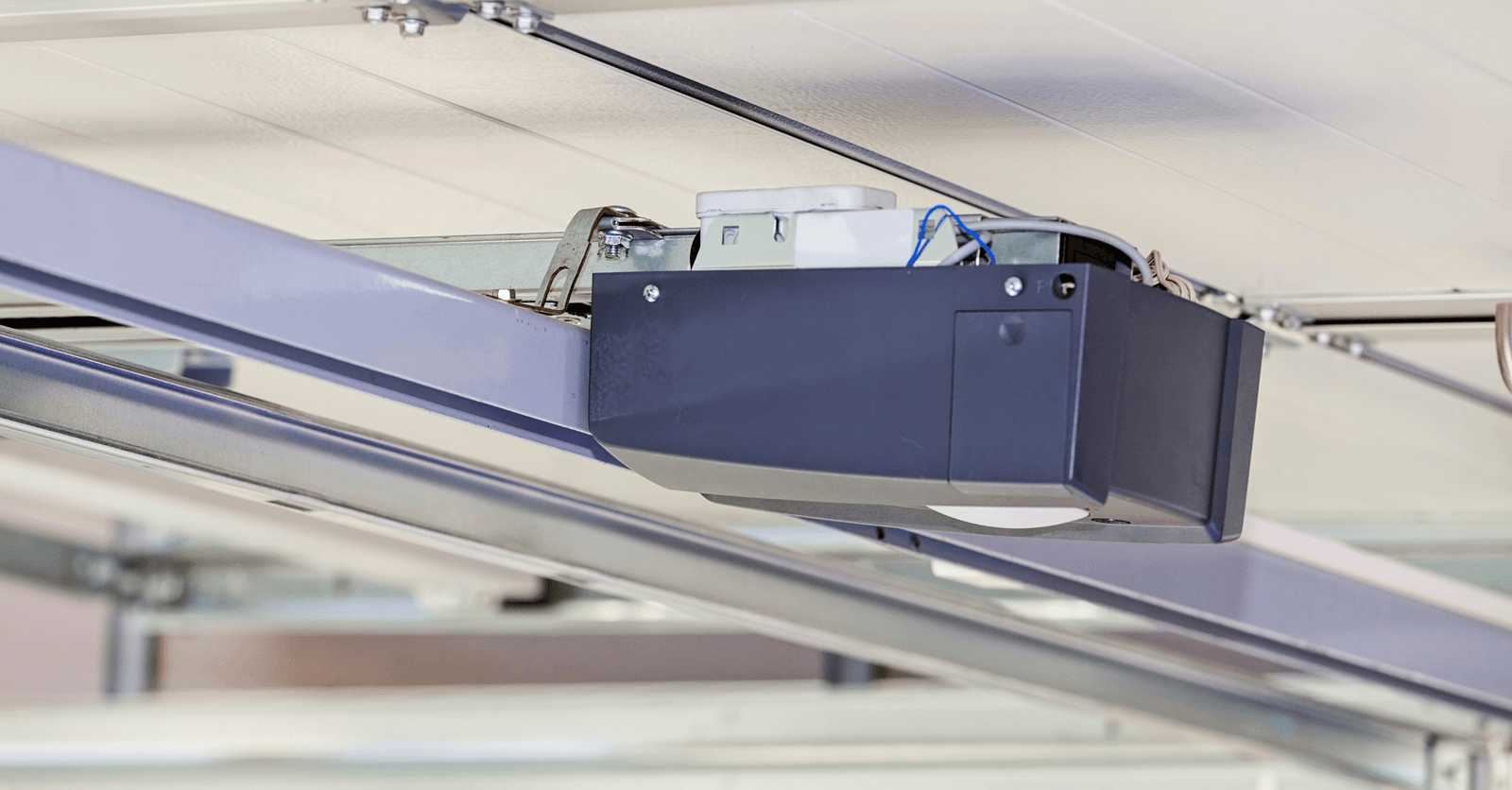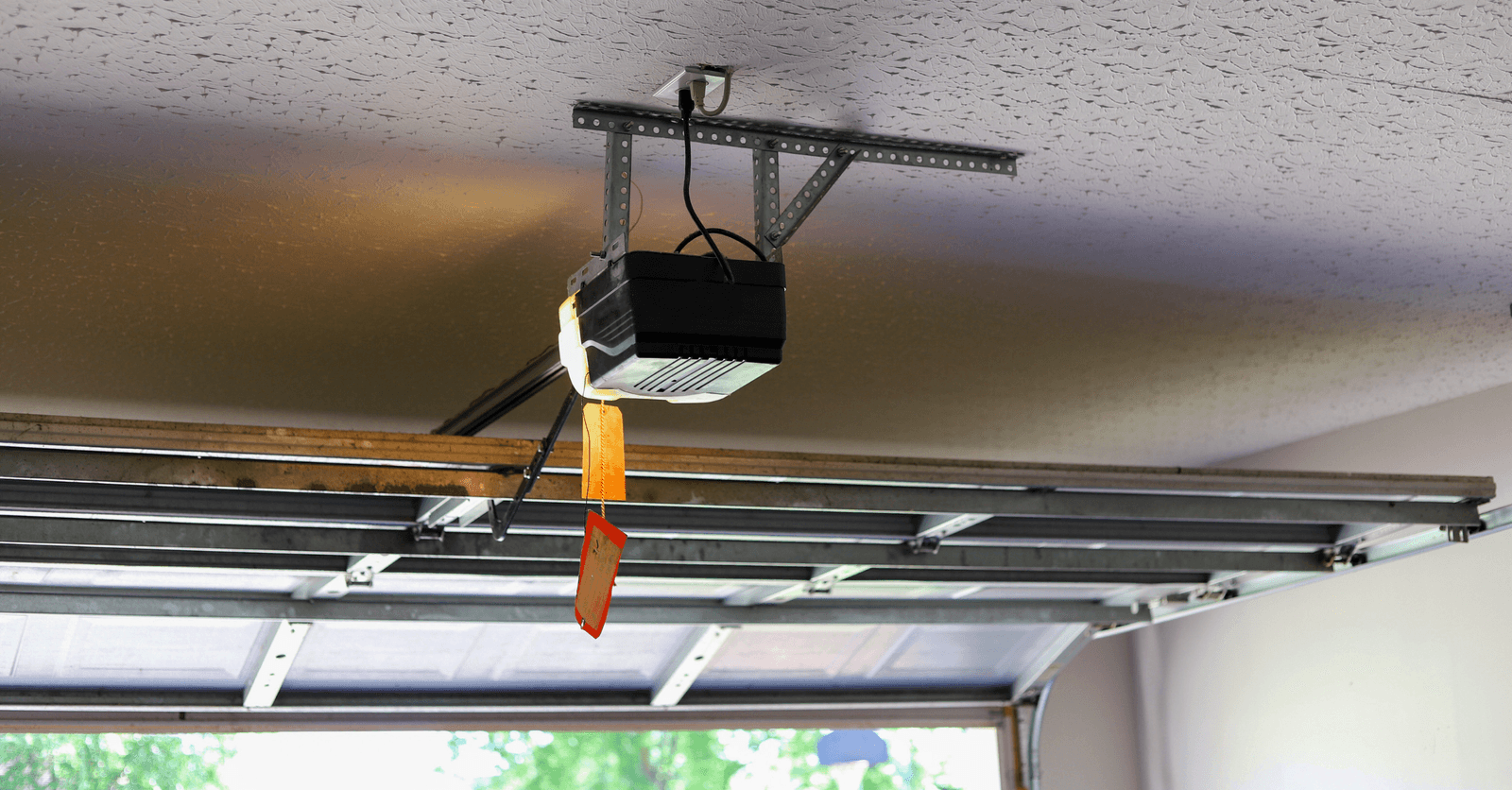The Benefits of an Electric Garage Door Opener
By Editorial Team
Updated on March 5, 2024

Installing a garage door opener can be a rather technical endeavour, but investing in one is more than worth it. Especially so when you know exactly what type of opener to choose.
The 3 Main Advantages of a Garage Door Opener

Source: Canva
Manually opening your garage door can be quite a tedious daily task. However, you could easily be spared the trouble by using an electric opener that boasts comfort, safety, and value for money.
1. Comfort
An electric garage door benefits from being opened from afar with the help of a remote control. As such, you no longer need to exit your vehicle midwinter to get into your garage.
And, if you want to close it behind while still being comfortably seated, basking in the warmth of your car, you can certainly do so.
2. Safety
An electric garage door is harder to open than a manual garage door. Especially so since amongst the accessories sold separately, you can opt for a remote-controlled garage door set with a rolling code technology.
What’s that, you ask? Typically, to remotely open a garage door, the remote control will send a set signal to the motor. However, using rolling code technology, your remote control will change the code with each opening.
3. Value for money
There are several products available to homeowners on the market. The cost, which includes the door and installation, will be wide-ranging.
Plan on spending between $800 and $4,000 to purchase and install a garage door. Naturally, prices climb based on the size of the door, and a double garage door will be more expensive than a single garage door.
Which opener should you choose?

Source: Canva
Garage door opener models largely depend on two factors:
type of garage door
weight of the door
As such, based on their opening mechanisms, garage doors require a specific type of motor. Also, based on their weight, they’ll require a motor with a specific horsepower.
Which type of opener suits which garage door?
There are five* different types of garage door openers, two of which will be detailed below.
1. Chain drive
Chain-drive openers can be the quietest on the market.
True to its name, a chain-drive garage door opener operates on a chain mechanism connected to a motor hung from the garage ceiling. The traction uses a sprocket to turn the trolley secured to a track. It’s compatible with the following door types:
sectional door
overhead garage door
However, this type of electric opener isn’t compatible with doors weighing more than 132 lb (60 kg) or measuring more than 86 square feet (8 m²).
2. Belt-drive garage door opener
This model is very similar to the one described above, except that instead of relying on a chain, it’s a rubber belt. The motor was made to operate both sectional and overhead garage doors and is ideal for opening and closing 86 square feet (8 m²) doors or more.
The rubber belt’s resistance makes it possible to open and close doors weighing up to 176 pounds (86 kg), spanning 107 square feet (10 m²).
*Also available are wall-mount, smart, and screw-drive garage door openers.
How much horsepower does a garage door opener have?
You can choose between three different horsepower:
½ HP/500 N (Newton)
¾ HP/700 N
1 HP/1,000 N
The required horsepower for a garage door largely depends on its weight, which is determined by its size. Here’s a chart outlining the required horsepower for each size:
Door size | Horsepower |
9 x 7 ft (2.7 x 2.1 m) | ½ HP or 500 N |
16 x 7 ft (4.9 x 2.1 m) or solid wood | ¾ HP or 700 N |
> 16 x 7 ft (4.9 x 2.1 m) | 1 HP or 1,000 N |
The motor must always be connected to an automatic reverse function. With it, the garage door will automatically reverse in its track without a problem.
The auto-reverse function uses an infrared sensor located at the bottom of the garage door. It has a low-voltage wire connected to the motor’s sensor. Therefore, if the sensor can’t read the infrared beam, the motor will automatically shut off and reverse the door.
Since 1982, in the United States, 36 children aged between 2 and 14 were fatally injured by an electric garage door. This is why it’s strongly advised to check the system’s function once a month and adhere to the manufacturer’s guidelines and safety warnings.
How to Install a Garage Opener on an Overhead Door

Source: Canva
More and more garage door motors are sold in kits. However, the bottom line is this: if you DIY the installation, you risk partly or completely invalidating the manufacturer’s warranty.
Begin by securing the framing against the wall. The framing is what the garage door tracks (or rails) will later be attached to, onto which the electric opening and lowering system will be secured.
However, to ensure that the mechanism functions properly, make sure it’s straight. Hence the need for a level or carpenter’s square.
Two people are needed to install a garage door. Solely sectional garage door installations can be deemed a one-person job.
Once the door is installed, you simply have to connect the door to its power unit. A proper electrical installation mandates a separate connection, one connected to a specific circuit breaker in your electric panel.
Repair Tips
Two types of glitches can occur with a garage door opener:
jam
failure
Jamming is always linked to components unrelated to the motor. For example, the electric garage door isn’t moving properly along the track and the motor jams. This is also the case when the hinges holding the door panels stick or when worn springs are at fault.
When dealing with a malfunctioning motor, the problem lies within the system’s motor. It can turn out to be a power failure or simply the motor wearing over time.
Therefore, before taking apart the garage door opener’s motor, best to start by individually cleaning the pieces around the motor and door. Once the mechanisms have been cleaned of any dust or rust stains, then the motor can be carefully taken apart.
At that stage, if you’re able to spot the defective piece, simply change it. The culprit can be:
Power supply components
Infrared sensor
Springs
Hinges
Rollers
When in doubt, an expert will know how to find the origin of the failure and fix it.
How to Open a Motorized Garage Door Without Electricity
Avoid touching anything but the emergency release cord or button. This feature will free the door trolley and allow you to manually open it. Simply pull on the release cord, and allow it to reposition itself.
Should you attempt to tinker with the motor, you’re purposefully putting yourself in harm's way given the stress under which every mechanism is when the door is closed.
It may be that, depending on your garage’s configuration, you don’t have access to an emergency release cord. If that’s the case, use the quick-release lock mechanism that’s usually found on the door. Simply use your key to unlock it.
Naturally, as the saying goes, better safe than sorry; have an emergency battery on hand.
Electric Garage Door Opener: A Worthwhile Investment to Boost Comfort and Safety
Installing an electric garage door opener means significantly benefiting from several advantages. Such a device greatly simplifies your everyday life by remotely opening and closing your garage door, thereby eliminating the need to do so manually. Furthermore, it reinforces your safety by limiting the risks of break-ins and provides an air-tight seal. And, in terms of energy efficiency, a well-maintained motorized door can significantly reduce heat or cool air losses. In a nutshell, investing in an electric garage door opener translates into improved comfort, peace of mind, convenience, and a well-being boost, making this home improvement project worthwhile for safety-conscious homeowners.
Get 3 quotes for your electric garage door opener installation project
RenoQuotes.com can help you get quotes from a general contractor. By submitting your project, we’ll put you in contact with top-rated contractors. Fill in the form on the homepage (it only takes a few minutes) and get estimates from trusted professionals.
Dial 1-844 828-1588 to speak with one of our customer service representatives.
Looking for something else?
Related articles
The latest industry news, interviews, technologies, and resources.

Editorial Team
•05 Dec 2025
Windows are quite possibly one of, if not the, most important element of decor within a home. This is because windows help to let in natural light which completely transforms the ambiance of any space.

Editorial Team
•04 Apr 2024
The two-way mirror—also known as a one-way mirror—is grounded in an extremely straightforward principle. To fully grasp its functionality, one must first take a closer look at the standard mirror, which is all too familiar to most, prior to broaching the advantages and drawbacks of the former.

Cynthia Pigeon
•07 Nov 2023
Sliding doors have a significant advantage over hinged doors: the lack of a swinging panel. This unique characteristic makes many homeowners more prone to installing this type of door. And there are many options to choose from when it comes time to purchase a sliding door.

Cynthia Pigeon
•27 May 2024
Coating drywall joints to obtain a smooth wall is an art form in itself. Although still widely used to achieve an appealing finish, one must still take into account the errors normally done by novice renovation workers while undertaking this type of project to avoid making them in turn.

Editorial Team
•07 Nov 2023
Hot water heating systems are an integral part of our heritage and are still found and efficiently used in most centennial houses in Quebec. The main reason they’re not as common nowadays is that installation costs are steeper than that of other heating systems, which makes some homeowners reluctant. In older buildings, it’s rather tempting to opt for electric baseboard heaters. However, if you’ve already got this type of heating system installed, consider all your options before making a final decision. And for those who're looking for an efficient system to improve the overall level of comfort in their home, hot water heating may be the best choice for years to come.